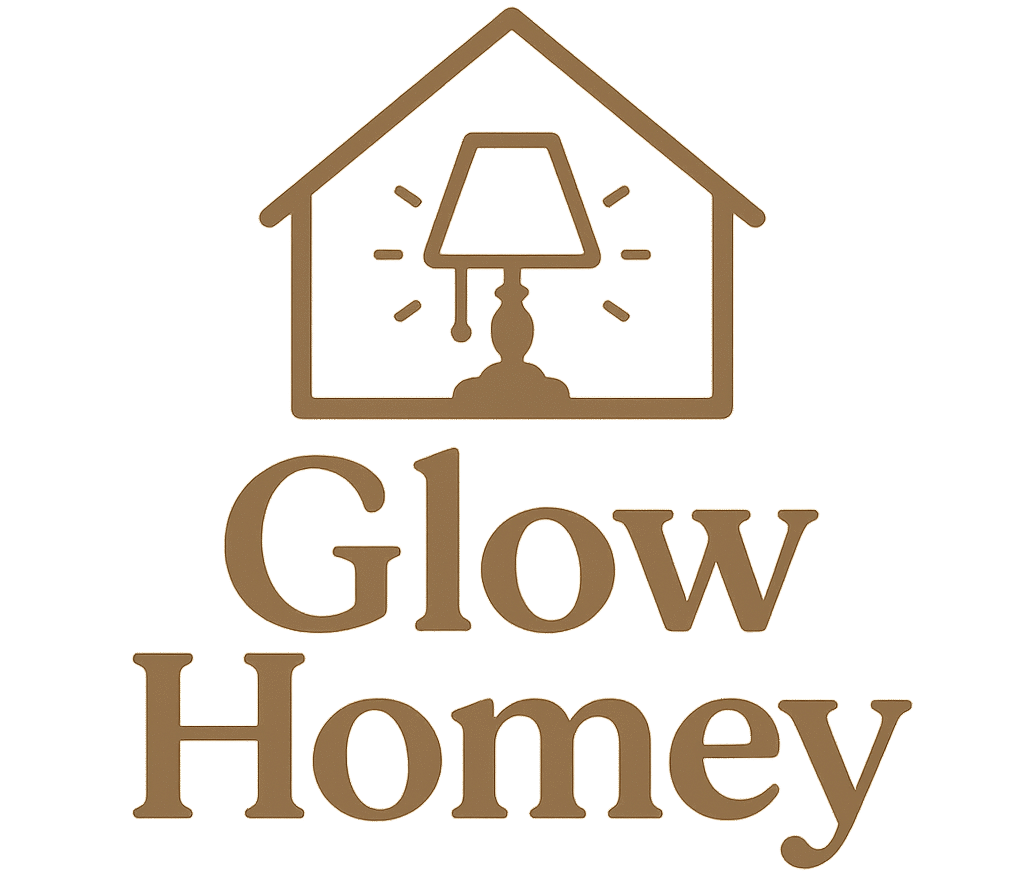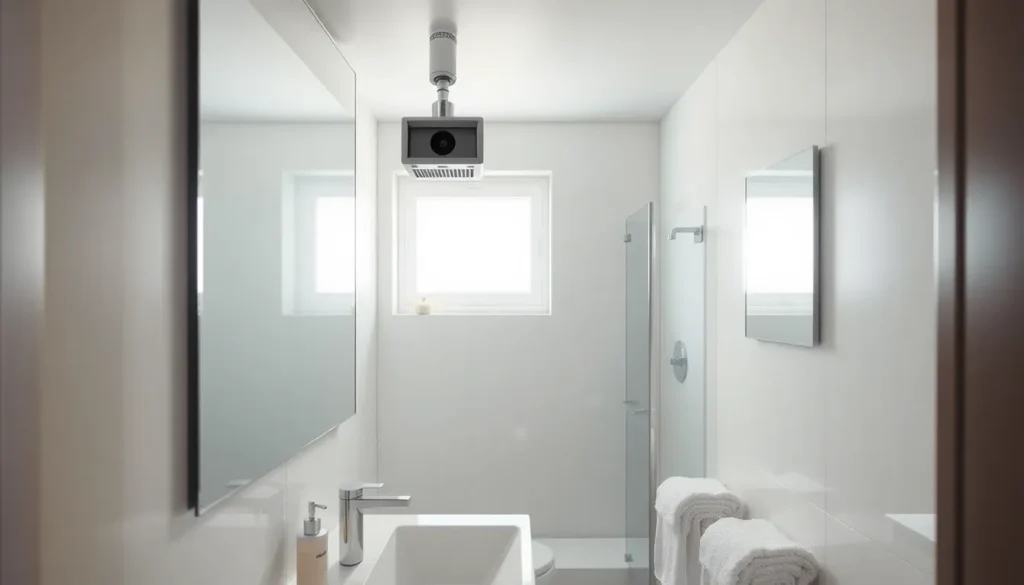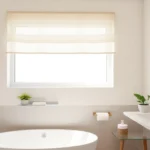Privacy concerns in our most intimate spaces have reached an all-time high. With technology advancing rapidly, hidden cameras have become increasingly sophisticated and nearly impossible to detect with the naked eye. These devices now blend seamlessly into everyday bathroom fixtures, from soap dispensers to towel racks, making traditional detection methods obsolete.
We’re living in an era where our personal sanctuaries aren’t as private as we’d like to believe. Professional-grade spy cameras can be disguised as ordinary bathroom accessories, wireless connectivity allows remote monitoring, and infrared capabilities enable round-the-clock surveillance. What’s more alarming is that these devices are becoming more accessible and harder to spot.
Understanding how these hidden cameras operate and where they’re commonly placed is crucial for protecting our privacy. Whether you’re concerned about hotel bathrooms, public facilities, or even your own home, knowing the latest concealment techniques and detection methods can help safeguard your personal space and peace of mind.
Assess Your Bathroom Security Needs and Vulnerabilities
Before implementing any surveillance measures, we must carefully evaluate our exact security requirements and potential weak points. Understanding these factors helps us make informed decisions about camera placement and detection strategies.
Identify High-Risk Areas in Your Home
Bathrooms rank among the most vulnerable spaces in our homes due to their private nature and frequent use. Security consultants consistently identify these areas as primary targets for hidden surveillance devices because they offer opportunities for compromising footage.
High-traffic zones within bathrooms present the greatest risk for unwanted monitoring. These include areas near sinks, mirrors, and entrance points where movement is most frequent. Shower areas and restroom spaces face particular vulnerability since they’re where people expect complete privacy.
Common hiding spots that we should inspect include:
| Location Type | Exact Items | Risk Level |
|---|---|---|
| Fixtures | Showerheads, faucets, towel racks | High |
| Accessories | Soap dispensers, air fresheners, tissue holders | High |
| Electronics | Smoke detectors, alarm devices, USB chargers | Medium |
| Décor | Picture frames, wall décor, plants | Medium |
| Structural | Vents, outlets, wall holes | Low |
Evaluate Current Security Measures
Visual inspection serves as our first line of defense against hidden surveillance devices. We should conduct thorough examinations of our bathrooms, looking for objects that appear out of place or unusually positioned.
Fingertip testing involves running our hands over various surfaces and items to detect unusual textures, hidden compartments, or misaligned objects. This tactile approach often reveals cameras that visual inspection might miss.
Technology based detection offers more sophisticated options for identifying hidden devices. RF signal detectors can identify wireless cameras by detecting their transmission frequencies. Infrared scanners locate cameras by detecting heat emissions from their lenses, particularly useful for night vision capable devices.
Lens detection devices use specialized lighting to reveal camera reflections that would otherwise remain invisible to the naked eye. These tools scan bathroom surfaces systematically to identify hidden optical equipment.
Determine Optimal Camera Placement Zones
Entrance monitoring represents the most effective placement strategy for legitimate security cameras. Positioning devices near doorways captures activity as people enter or exit without intruding on private activities.
Strategic positioning should focus on areas where security concerns are highest while maintaining respect for privacy boundaries. Common placement zones include spaces near bathroom entrances, vanity areas, and general circulation paths.
Coverage angles must be carefully planned to monitor important areas without capturing private activities. We should ensure camera positioning covers entry points and high value areas while avoiding intimate spaces like shower enclosures or toilet areas.
Wireless connectivity options allow for remote monitoring through smartphones or computers, providing convenient access to live feeds and recorded footage. These systems offer flexibility in placement since they don’t require visible wiring that might compromise concealment.
Motion activated systems provide efficient monitoring without constant recording, triggering only when movement is detected. This approach conserves storage space while ensuring important events are captured automatically.
Choose the Right Hidden Camera Technology for Bathroom Monitoring
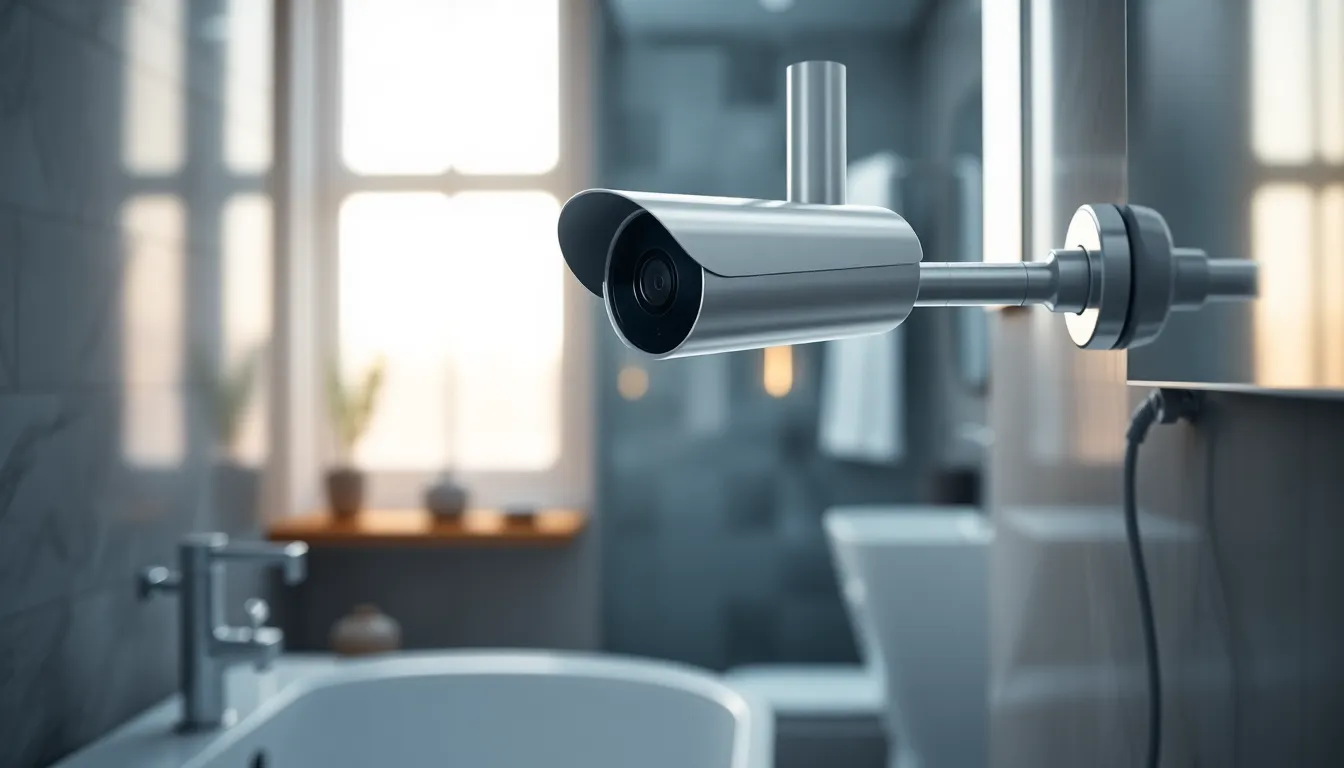
Selecting the appropriate camera technology determines the effectiveness of your bathroom surveillance system. We’ll examine the key technological considerations that ensure optimal monitoring performance.
Wireless vs. Wired Camera Systems
Wireless cameras offer exceptional flexibility for bathroom monitoring through Wi-Fi connectivity. These systems connect to 2.4GHz networks and provide remote access via mobile apps, allowing you to monitor footage from anywhere. Installation becomes significantly easier since you won’t need to run cables through walls or fixtures. Most wireless models support real-time viewing and instant alerts, though they require consistent power sources or regular battery management.
Wired camera systems deliver more stable connections and eliminate concerns about Wi-Fi interruptions. These cameras receive continuous power through their wired connections, reducing maintenance requirements. Installation proves more challenging since wiring must remain concealed to maintain the covert nature of the surveillance. Detection risks increase with visible wiring, making placement options more limited compared to wireless alternatives.
Battery life considerations favor wired systems for continuous monitoring, while wireless cameras excel in temporary or flexible surveillance situations.
Night Vision and Low-Light Capabilities
Infrared technology enables clear video capture even in complete darkness, making it essential for bathroom monitoring. Modern hidden cameras feature non-luminous IR LED lights with effective ranges up to 5 meters, ensuring surveillance continues without visible indicators. These cameras automatically switch between day and night modes based on ambient lighting conditions.
Low light performance varies significantly between camera models, with some requiring minimal illumination while others function in total darkness. We recommend cameras with infrared capabilities since bathrooms often have limited or variable lighting throughout the day. The invisible nature of IR lighting maintains the covert aspect of your surveillance system.
Quality night vision eliminates the need for additional lighting that might reveal camera locations or create suspicion about monitoring activities.
Motion Detection and Smart Alerts
Motion activation conserves both storage space and battery life by recording only when activity occurs. These systems use passive infrared sensors to detect movement within the camera’s field of view. Smart detection algorithms can differentiate between important movement and minor disturbances like steam or shadows.
Instant notifications connect to your smartphone through secure apps, providing real-time awareness of bathroom activity. Push alerts include timestamps and often thumbnail images, allowing you to quickly assess situations without reviewing hours of footage. Many systems offer customizable sensitivity settings to reduce false alarms from routine environmental changes.
Storage optimization occurs automatically as motion-triggered recording eliminates hours of empty footage. This feature proves particularly valuable for battery-powered cameras since continuous recording would drain power quickly. Smart scheduling options allow you to set exact monitoring periods based on your security needs.
Install Discreet Cameras in Bathroom Fixtures and Accessories
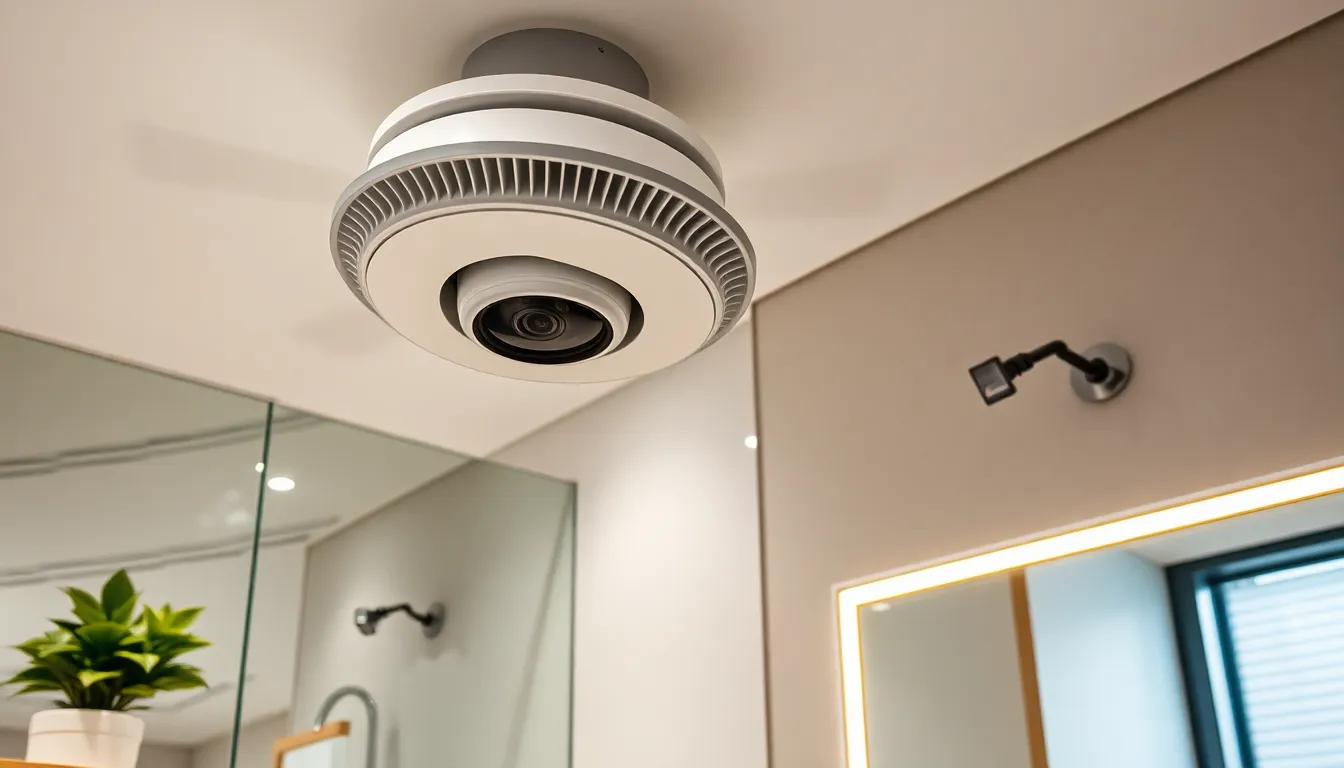
Installing cameras within existing bathroom fixtures provides natural concealment opportunities that blend seamlessly with typical bathroom environments. These placement strategies use common elements already present in most bathrooms.
Concealed Cameras in Ventilation Fans
Ventilation fans offer excellent hiding spots for surveillance equipment due to their elevated positions and functional necessity. We recommend positioning small camera modules within the vent cover holes to maintain discretion while achieving optimal viewing angles. The grille structure naturally masks lens placement, and the height advantage provides comprehensive coverage of bathroom activities.
Installing cameras in ventilation systems requires careful attention to moisture protection and airflow maintenance. Battery powered wireless units work best in these locations since electrical connections can complicate installation. The elevated positioning reduces detection likelihood while maximizing field of view coverage.
Hidden Recording Devices in Decorative Items
Decorative bathroom accessories create perfect camouflage for recording devices through their commonplace appearance. Air fresheners, artificial plants, and wall mounted artwork can house miniature cameras by hollowing out interior spaces and cutting lens sized openings. These items naturally blend with bathroom decor without raising suspicion.
Selecting decorative items requires considering their typical placement and frequency of handling. Fixed wall decorations work better than moveable objects since regular touching increases detection risk. We suggest choosing items that match existing bathroom aesthetics to avoid drawing attention to new additions.
Camouflaged Cameras in Everyday Bathroom Objects
Everyday bathroom objects provide many concealment opportunities through strategic modification and placement. Tissue boxes, mirror frames, and countertop accessories can accommodate small recording devices with minimal alteration. The key involves selecting frequently present items that won’t seem unusual or out of place.
Mirror installations offer particularly effective concealment since the reflective surface can hide lens openings along frame edges. Tissue dispensers work well because their openings naturally accommodate camera lenses without seeming suspicious. Soap dispensers and toothbrush holders can also house wireless recording equipment while maintaining their functional appearance.
Battery operated cameras eliminate visible wiring concerns and allow flexible positioning within these everyday objects. We recommend securing footage with password protection and ensuring compliance with applicable privacy laws before implementing any surveillance system.
Position Cameras for Maximum Coverage and Privacy Protection
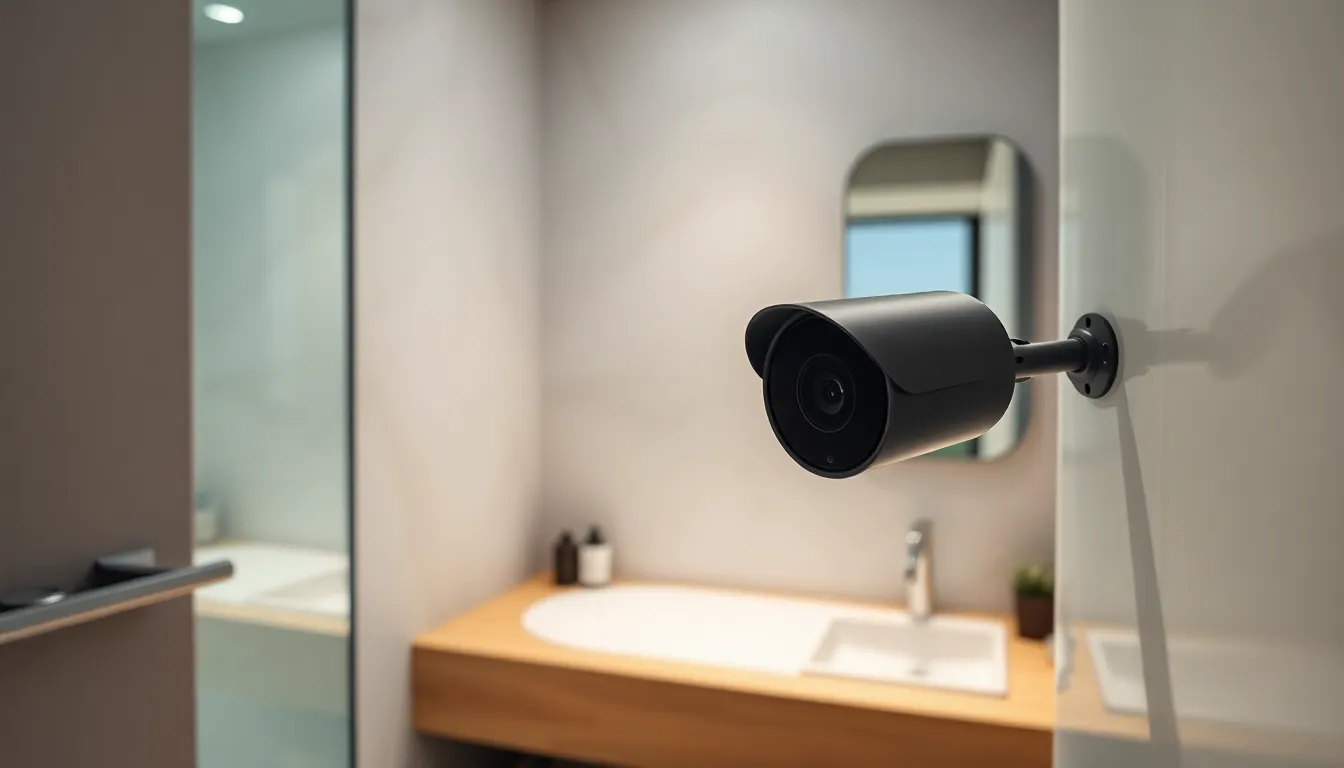
Achieving optimal surveillance coverage requires strategic positioning that balances comprehensive monitoring with privacy protection. We’ll explore proven techniques for maximizing camera effectiveness while maintaining ethical boundaries.
Strategic Angles for Entry Point Monitoring
Position cameras to directly face main entry points like bathroom doors to capture clear footage of anyone entering or leaving the space. Research shows that monitoring entry points provides the most effective security coverage without compromising personal privacy.
Install devices at elevated positions such as ceiling corners to cover maximum area while remaining unobtrusive. These elevated angles minimize detection while providing comprehensive surveillance of access points.
Use downward angled positioning above eye level to maintain discretion while eliminating blind spots near doorways. This strategic placement captures movement patterns without creating obvious surveillance indicators.
Select wide angle lenses to maximize coverage of monitored areas without requiring multiple devices. Studies indicate that wide angle positioning reduces equipment needs while improving overall monitoring effectiveness.
Blind Spot Elimination Techniques
Evaluate bathroom layouts to identify potential blind spots caused by fixtures like sinks, toilets, or shower stalls before installation. Professional security assessments reveal that fixture placement creates the most common surveillance gaps.
Adjust camera positioning or add supplementary devices at complementary angles to cover identified blind zones effectively. Multiple angle coverage ensures comprehensive monitoring without privacy violations.
Conceal cameras in common objects to avoid detection while maintaining optimal viewing angles, such as inside picture frames or disguised as USB chargers near bathroom entrances. Strategic concealment prevents tampering while preserving surveillance integrity.
Focus on high traffic areas near sinks and mirrors where movement naturally occurs without invading private spaces. Traffic pattern analysis shows these zones provide maximum security information with minimal privacy concerns.
Privacy Conscious Camera Positioning
Respect legal and ethical considerations by avoiding placement that invades personal privacy, particularly in areas requiring full privacy like shower stalls or toilet areas. Privacy laws strictly prohibit recording in intimate spaces without explicit consent.
Use cameras primarily for safety monitoring of entrances and common bathroom areas without capturing private activities. This approach maintains security objectives while respecting individual privacy rights.
Choose discrete concealment methods to protect individuals’ privacy while enabling security monitoring, such as embedding cameras within air purifiers or wall mounted fixtures positioned to monitor only entry and exit points. Research confirms that entrance focused positioning provides adequate security without privacy violations.
Ensure field of view includes key entry points like doors and windows to monitor access efficiently while avoiding intimate areas. Professional installation guidelines recommend focusing surveillance on access control rather than personal activities.
Integrate Smart Technology with Your Hidden Camera System
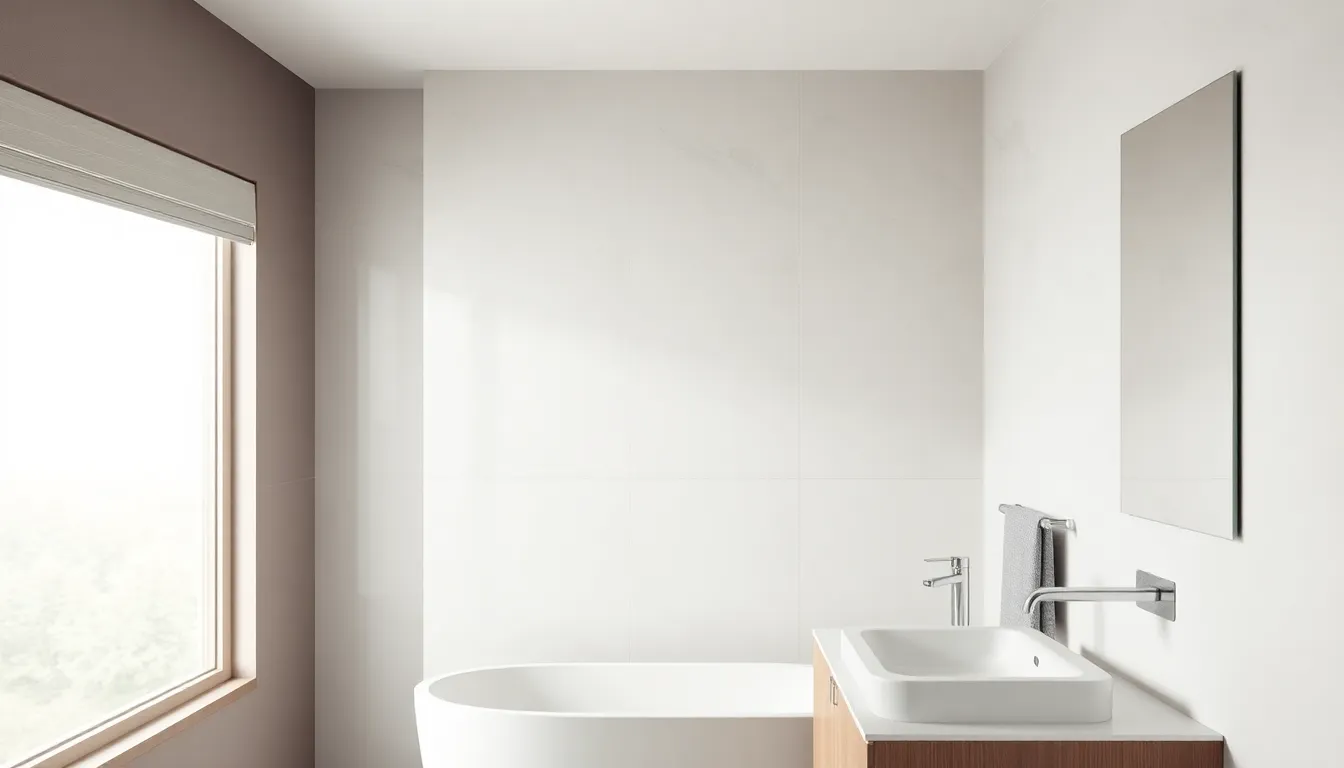
Modern hidden camera systems combine advanced technology with discreet design to create comprehensive monitoring answers. Smart features transform basic surveillance into intelligent security networks that adapt to your exact needs.
Mobile App Connectivity and Remote Monitoring
Mobile app connectivity allows you to monitor your bathroom surveillance system from anywhere using your smartphone or tablet. We recommend selecting cameras that offer secure wireless connections and real-time streaming capabilities for maximum convenience.
Live feeds provide instant access to your camera footage through encrypted mobile applications. These apps typically feature user-friendly interfaces that let you view multiple camera angles simultaneously and receive motion-triggered alerts.
Remote monitoring capabilities enable you to check your surveillance system while away from home. Many systems send push notifications directly to your device when motion is detected, ensuring you stay informed about any activity in monitored areas.
Smartphone integration includes features like two-way audio communication and remote camera control. Advanced systems allow you to adjust camera angles, zoom levels, and recording settings directly from your mobile device.
Cloud Storage and Local Recording Options
Cloud storage provides secure off-site backup for your surveillance footage with automatic uploading capabilities. This option ensures your recordings remain safe even if local equipment is damaged or tampered with.
Local recording options include SD card storage and network-attached storage devices for immediate footage access. These systems typically offer higher storage capacity and don’t require internet connectivity for basic recording functions.
Dual storage systems combine both cloud and local recording to maximize security and reliability. This approach provides redundancy while offering flexibility in how you access and manage your surveillance footage.
Storage capacity considerations include video quality settings and retention periods for your recordings. Higher resolution cameras require more storage space, with 1080p footage typically using 2-4 GB per hour of continuous recording.
Integration with Home Security Systems
Centralized management allows you to control multiple security devices through a single interface or application. This integration creates a comprehensive security network that includes cameras, sensors, and alarm systems working together.
Automated triggers connect your hidden cameras with other security components like motion sensors and door alarms. When one device detects activity, it can automatically activate cameras in related areas for comprehensive coverage.
Security system compatibility ensures your hidden cameras work seamlessly with existing home automation platforms. Popular systems support integration with smart home ecosystems for unified control and monitoring.
Alert coordination between different security components provides layered protection and reduces false alarms. When multiple sensors confirm activity, the system can escalate alerts and automatically begin recording from all connected cameras.
Maintain Legal Compliance and Ethical Standards
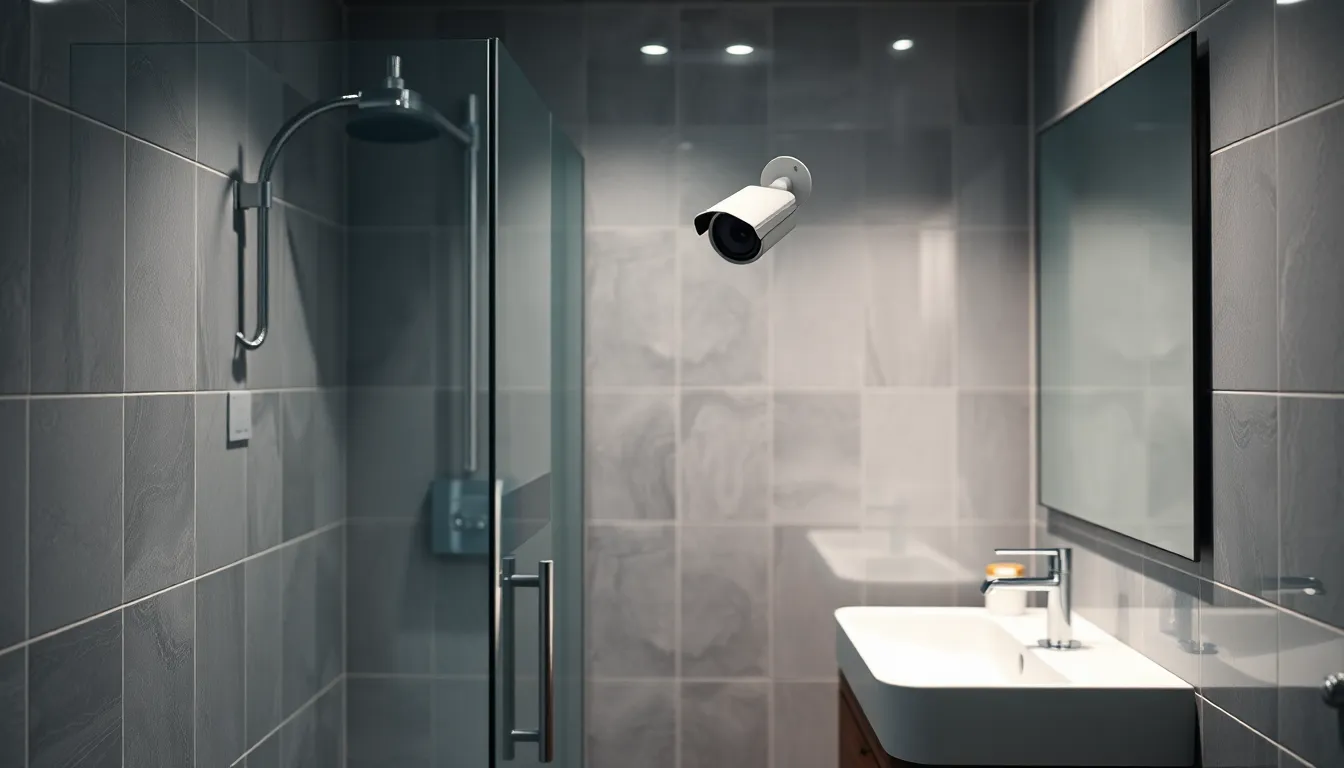
Before implementing any surveillance technology, we must prioritize understanding the complex legal industry surrounding hidden cameras in private spaces.
Understanding Privacy Laws and Regulations
Privacy laws explicitly prohibit hidden cameras in bathrooms across most jurisdictions. Bathrooms are classified as private spaces where individuals maintain a reasonable expectation of privacy, making surveillance installations both illegal and ethically unacceptable. States including Alabama, California, and Massachusetts have exact statutes that criminalize video surveillance in bathrooms, locker rooms, changing rooms, and hotel rooms.
California’s Penal Code 647(j) serves as a prime example of these protective measures. This legislation specifically criminalizes camera use to view inside bathrooms, reinforcing fundamental privacy rights that protect individuals from unauthorized surveillance. Even in states without explicit prohibitions, tort laws provide additional protection against unauthorized recordings in private spaces.
Understanding regional privacy regulations becomes essential for anyone considering surveillance technology. Laws vary significantly between countries and jurisdictions, making it crucial to research exact local requirements before installing any monitoring equipment. We recommend consulting with legal experts to ensure full compliance with applicable privacy statutes and regulations.
Proper Notification and Consent Requirements
Explicit consent requirements form the foundation of lawful surveillance practices. Without clear notification and informed consent from all affected individuals, hidden cameras violate privacy laws and expose installers to serious legal consequences. The intimate nature of bathroom activities makes obtaining legitimate consent virtually impossible.
Notification standards require transparent disclosure of surveillance activities. Even if state laws don’t explicitly prohibit video surveillance in certain areas, proper notification becomes legally mandatory for any recording device installation. Consent must be obtained before recording others for surveillance purposes, and failure to do so results in illegal activity.
Legal experts consistently emphasize that consent cannot be reasonably obtained for bathroom surveillance. The private nature of these spaces and the activities conducted within them make legitimate consent impossible to secure, regardless of the stated security purpose or intended use of the recorded footage.
Balancing Security with Privacy Rights
Security cameras remain legal in visible, public areas when properly disclosed and installed. The key distinction lies between protecting property through transparent surveillance policies versus infringing on private moments through hidden recording devices. Responsible security technology implementation requires avoiding hidden recording in private spaces entirely.
Public spaces like open plan offices or home porches allow for subtle surveillance without privacy violations. These areas lack reasonable expectations of privacy, making security monitoring both legal and appropriate when properly disclosed. We recommend focusing surveillance efforts on communal areas where privacy expectations don’t apply.
Ethical security practices prioritize transparency over concealment in monitoring approaches. Instead of hidden cameras in private spaces, property owners should carry out visible security measures that protect safety while honoring privacy rights and legal standards. This approach maintains security effectiveness while respecting individual privacy expectations and legal requirements.
Troubleshoot Common Hidden Camera Installation Issues
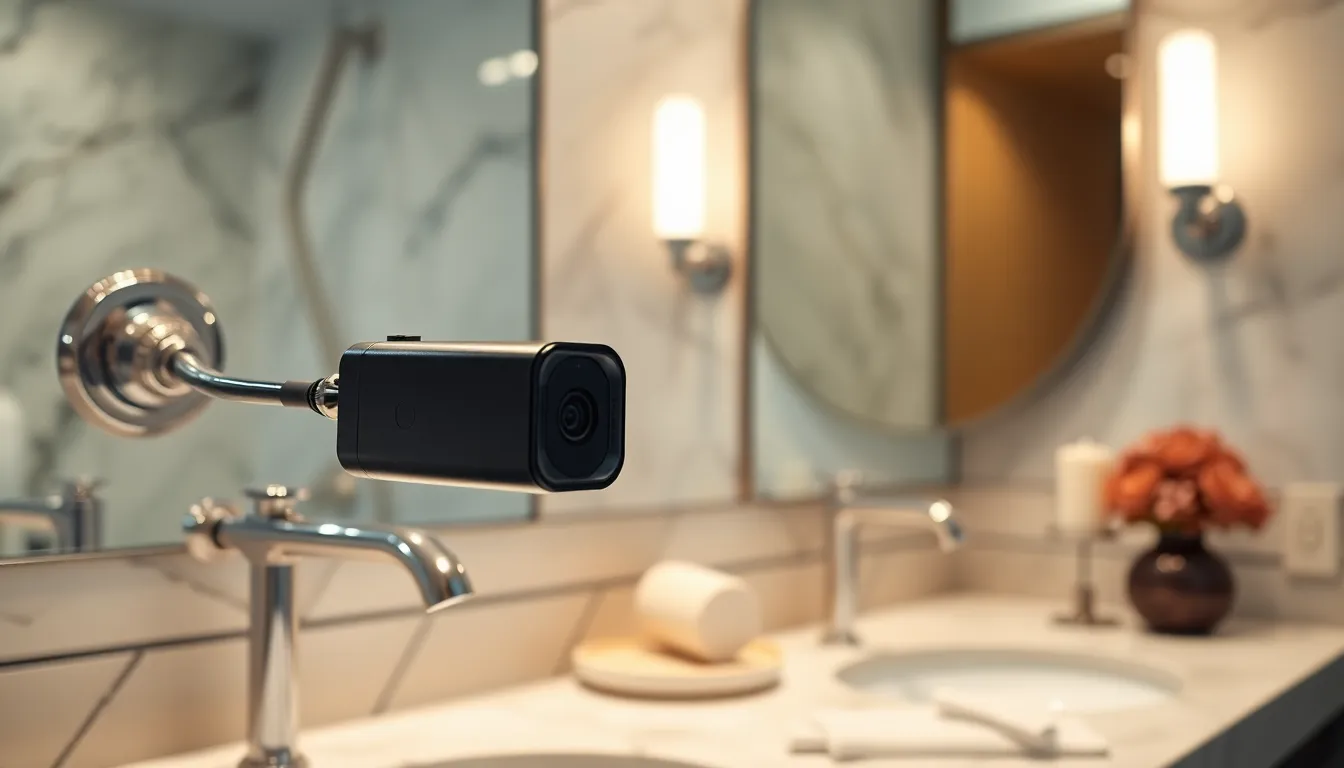
Even the most carefully planned hidden camera installations can encounter technical difficulties that compromise their effectiveness. Understanding how to address these common issues ensures your surveillance system operates reliably and maintains its covert nature.
Resolving Connectivity and Signal Problems
WiFi signal strength poses the biggest challenge for wireless hidden cameras in bathroom environments. Thick walls and metal fixtures commonly found in bathrooms can significantly weaken wireless signals, causing intermittent connections or complete signal loss. We recommend testing signal strength at your intended installation location before mounting any device.
Positioning WiFi extenders strategically throughout your home improves connectivity for cameras placed in signal-weak areas. Install extenders in hallways or adjacent rooms to bridge the gap between your router and bathroom locations. Many modern extenders support mesh network configurations that provide seamless coverage.
Selecting cameras with stronger antenna systems helps overcome signal interference from bathroom fixtures. Look for models that specify enhanced WiFi capabilities or dual-band connectivity options. Some advanced units can automatically switch between 2.4GHz and 5GHz frequencies to maintain optimal connections.
Using wired Ethernet connections eliminates WiFi dependency entirely when feasible. Run cables through wall cavities or existing conduit systems to connect cameras directly to your network. This approach provides the most stable connection but requires more complex installation planning.
Addressing Power Supply Challenges
Battery-powered cameras offer the greatest flexibility for bathroom installations where electrical outlets aren’t readily available. Choose models with rechargeable lithium batteries that provide extended operation times. Many units can run for several weeks on a single charge with motion-activated recording.
Disguised power sources help maintain concealment while providing continuous operation. USB charger-style cameras can connect to existing bathroom outlets without appearing suspicious. Position these devices near mirrors or vanity areas where phone chargers would naturally be found.
Regular battery monitoring prevents unexpected downtime that could compromise your surveillance coverage. Set calendar reminders to check battery levels weekly or invest in cameras that send low-battery alerts to your smartphone. Some advanced models provide precise battery percentage readings through their companion apps.
Alternative charging methods extend operation in locations without convenient power access. Solar-powered options work well for bathrooms with windows, while some cameras support external battery packs that can be hidden within vanity cabinets or behind fixtures.
Optimizing Video Quality and Storage
Camera resolution directly impacts both video clarity and storage requirements for your surveillance system. Higher resolutions like 1080p provide better detail for identifying individuals but consume significantly more storage space. Balance your quality needs with available storage capacity.
Motion detection settings reduce unnecessary recording and extend battery life substantially. Configure sensitivity levels to avoid triggering on minor movements like shadows or steam while ensuring actual activity gets captured. Test different sensitivity settings to find the optimal balance for your exact environment.
Storage management strategies prevent important footage from being overwritten by routine recordings. Set up automatic cloud backups for critical events or use cameras with expandable local storage options. Many devices offer loop recording that overwrites the oldest files when storage fills up.
Night vision capabilities require proper positioning to function effectively in low-light bathroom conditions. Infrared cameras work best when positioned to avoid direct reflections from mirrors or shiny surfaces that can cause glare. Test recording quality under various lighting conditions to ensure consistent performance throughout the day.
Conclusion
We’ve explored the complex industry of hidden camera technology and its implications for bathroom privacy. Understanding detection methods and concealment techniques empowers us to better protect our personal spaces from unauthorized surveillance.
The key lies in balancing security needs with ethical boundaries. While technology offers sophisticated monitoring answers we must prioritize legal compliance and respect for privacy rights in intimate spaces like bathrooms.
Moving forward we recommend focusing on transparent security measures rather than covert surveillance. By staying informed about these technologies and maintaining vigilance in unfamiliar environments we can safeguard our privacy while making responsible security decisions.
Frequently Asked Questions
Are hidden cameras in bathrooms legal?
No, hidden cameras in bathrooms are illegal in most jurisdictions. Privacy laws specifically prohibit surveillance in intimate spaces where people have reasonable expectations of privacy. Installing hidden cameras in bathrooms without explicit consent violates invasion of privacy laws and can result in serious criminal charges.
How can I detect hidden cameras in my bathroom?
You can detect hidden cameras through visual inspection, checking for unusual objects or modifications to fixtures. Use technology like RF signal detectors, infrared scanners, and lens detection devices. Look for blinking lights, unusual wiring, or objects that seem out of place in common hiding spots like mirrors, vents, and decorative items.
What are the most common hiding spots for bathroom cameras?
Common hiding spots include ventilation fans, mirrors, light fixtures, towel racks, soap dispensers, air fresheners, and decorative wall art. Cameras are often concealed in everyday objects like tissue boxes, electrical outlets, and behind bathroom accessories where they blend with the existing décor.
What technology features should I look for in hidden cameras?
Key features include high video resolution (4K recommended), night vision capabilities with infrared technology, motion detection for storage optimization, wireless connectivity for remote access, and wide-angle lenses (120° field of view). Battery-powered options offer installation flexibility while cloud storage provides secure footage backup.
How do wireless hidden cameras differ from wired systems?
Wireless cameras offer installation flexibility, remote access capabilities, and easier concealment but require consistent power management and may face connectivity issues. Wired systems provide stable connections with continuous power supply but pose installation challenges in bathroom environments with moisture and limited access points.
What legal consequences exist for bathroom surveillance?
Installing hidden cameras in bathrooms can result in felony charges, significant fines, civil lawsuits, and mandatory registration as a sex offender in some jurisdictions. Victims can seek damages for emotional distress and invasion of privacy. The intimate nature of bathroom activities makes obtaining legitimate consent virtually impossible.
How can I protect my privacy from hidden bathroom cameras?
Conduct regular visual inspections of bathrooms, especially in hotels and public facilities. Check for unusual objects, modifications to fixtures, or blinking lights. Use your smartphone’s camera to detect infrared lights and consider carrying portable RF detectors when traveling to identify potential surveillance devices.
What should I do if I find a hidden camera in a bathroom?
Do not touch or move the camera. Document its location with photos, contact local law enforcement immediately, and preserve evidence. If in a hotel or public facility, notify management and consider contacting a privacy attorney. Report the incident to relevant authorities for proper investigation and legal action.
